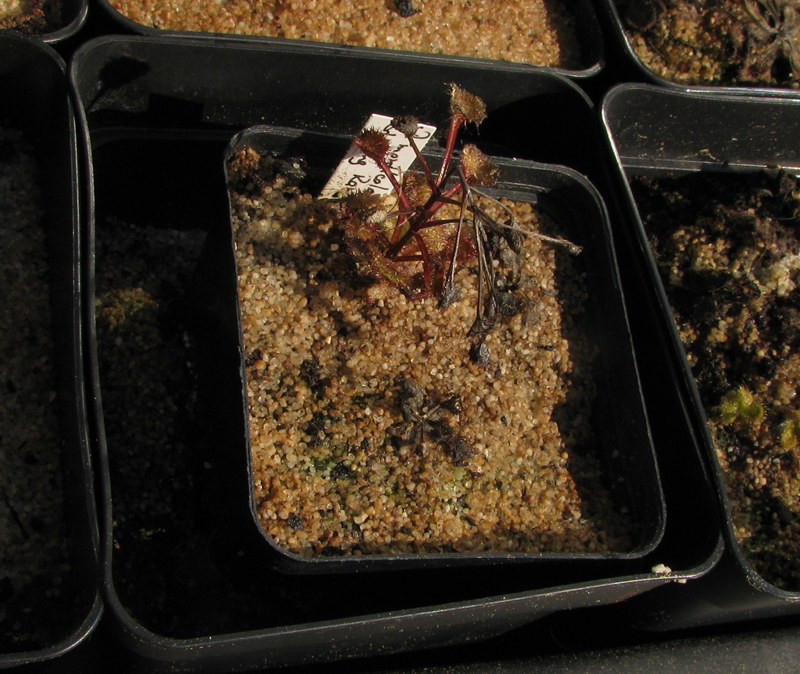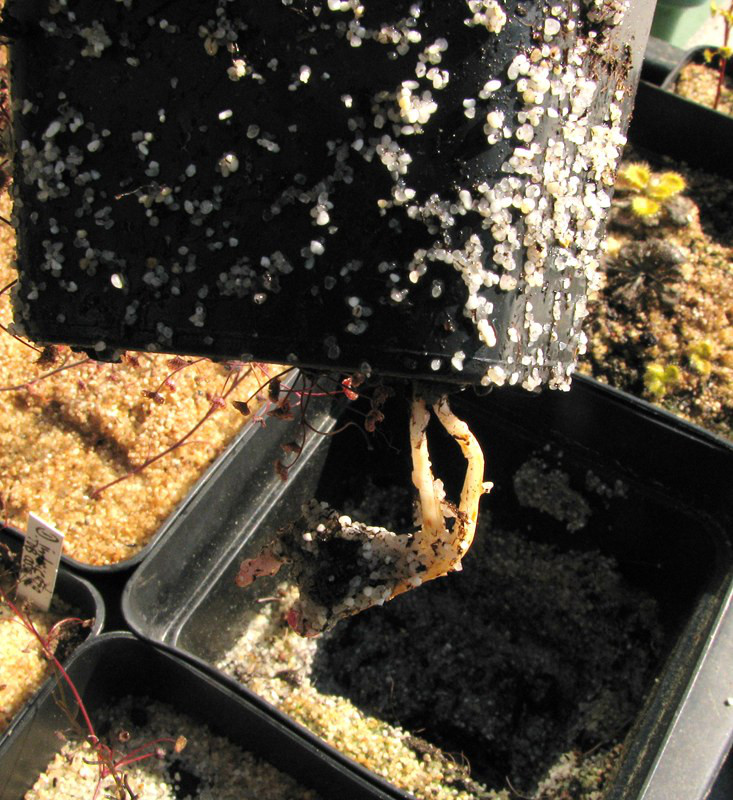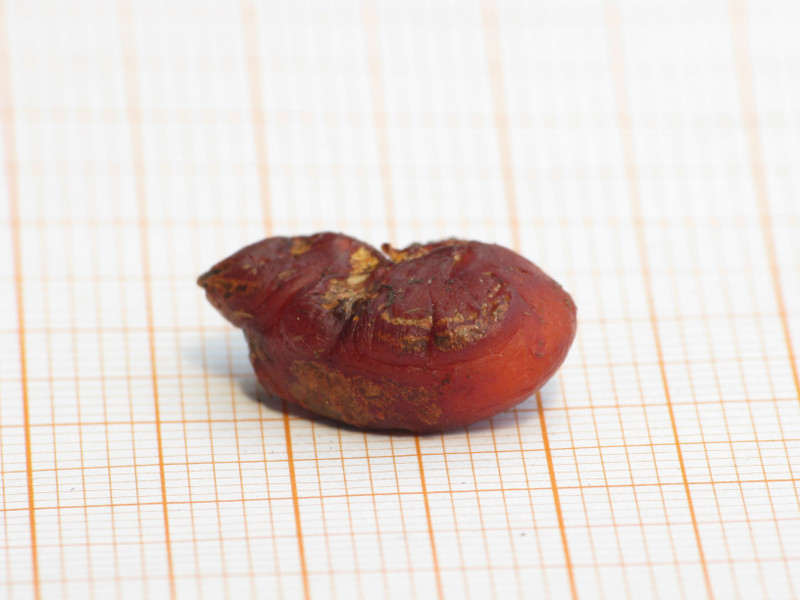 |
|
Pot size, a never ending story...
So you now have some tubers to start with. But what will be the best way to pot them? Here is what I do:
My preferred pots for growing tuberous Drosera have 10-11 cm height. Depending on the plant diameter and the number of tubers or plants I have 2 different widths to chose from: my standard pots measure 10 x 10 cm, the smaller one 7 x 7 cm.
For some species, mostly those in the D. peltata complex, the pot does not have to be that deep. Most of those also grow well in 7 cm deep pots.
In contrast, species like D. porrecta, D. rupicola as well as some others place their tubers so deep in the pot, that they - once reaching a decent size - will either place their tubers at the bottom of a 11 cm deep pot or, even worse, will grow their stolon out of the bottom of the pot and develop their tuber(s) under the pot. Both of this should be avoided. If the tubers develop at the bottom of the pot, they will be stading in water when you water by the tray method as I do. This may lead to rot and I have lost more tubers than I like to by this. The stolons may form another tuber higher up in the pot if it started to rot early enough. If not, you may loose this plant completely. If the plants are kept relatively dry during this time, your developing tubers should be safe. Therefore, in case you find out that the tubers are formed very deep in the pot, keep the plants relative dry and use a deeper pot for the next season.
If a stolon grows out of the bottom of the pot, it once again puts the developing tuber at risk when being kept too wet. In addition, there now also is the danger of physical damage, e.g. when you move the pot or the tray. Finally, once the tuber is formed and detached from the stolon, you will no longer be able to tell which pot it came from.
Once you see this happen while it still is possible to remove the plants from the pot without damaging something, you could just take the whole clump of substrate out of the pot and plant it into a deeper one. But most likely this will not be possible. In those cases I plant the whole pot into a deeper, larger or just another pot of the same size.

|
A pot with D. monticola plants which developed a stolon growing out of the bottom of the pot. To avoid any damage to the stolons, the pot was planted in a larger one. |
|
|
On the picture above you will see such a pot which I planted in a larger one to protect the stolons. This was done by adding some substrate to the larger pot, placing the smaller pot on the substrate and then adding more substrate to fix the smaller pot.
To make sure the plants get enough water for the rest of the season, these pots were mainly watered from above.

|
Some time later I lifted the pot carefully to demonstrate how the stolons developed further. You can see the larger pot on the in the background. |
|
|
So, how can you decide which pot size will be ideal? That is difficult to tell up front as there are differences even between clones of the same species, but at least some general statements can be made: the larger the tuber, the more likely it will be formed deep in the substrate. Thus, species forming tubers of 1.5 cm or more in diamter, most likely will need a deep pot. Smaller plants of the same species will be happy with the 10-11 cm deep pot for a few years. Once I observe them forming tubers at the bottom of those pots, I pot them in deeper ones for the next season. The same method works well when growing these plants from seeds: as soon as the tubers are found at or near the bottom of a given pot size, I use the next larger one for the coming season.

|
A Drosera rupicola tuber which developed under the bottom of its pot in a cavity. Initially it was healthy but it rotted during the summer. |
|
|
|
 |



